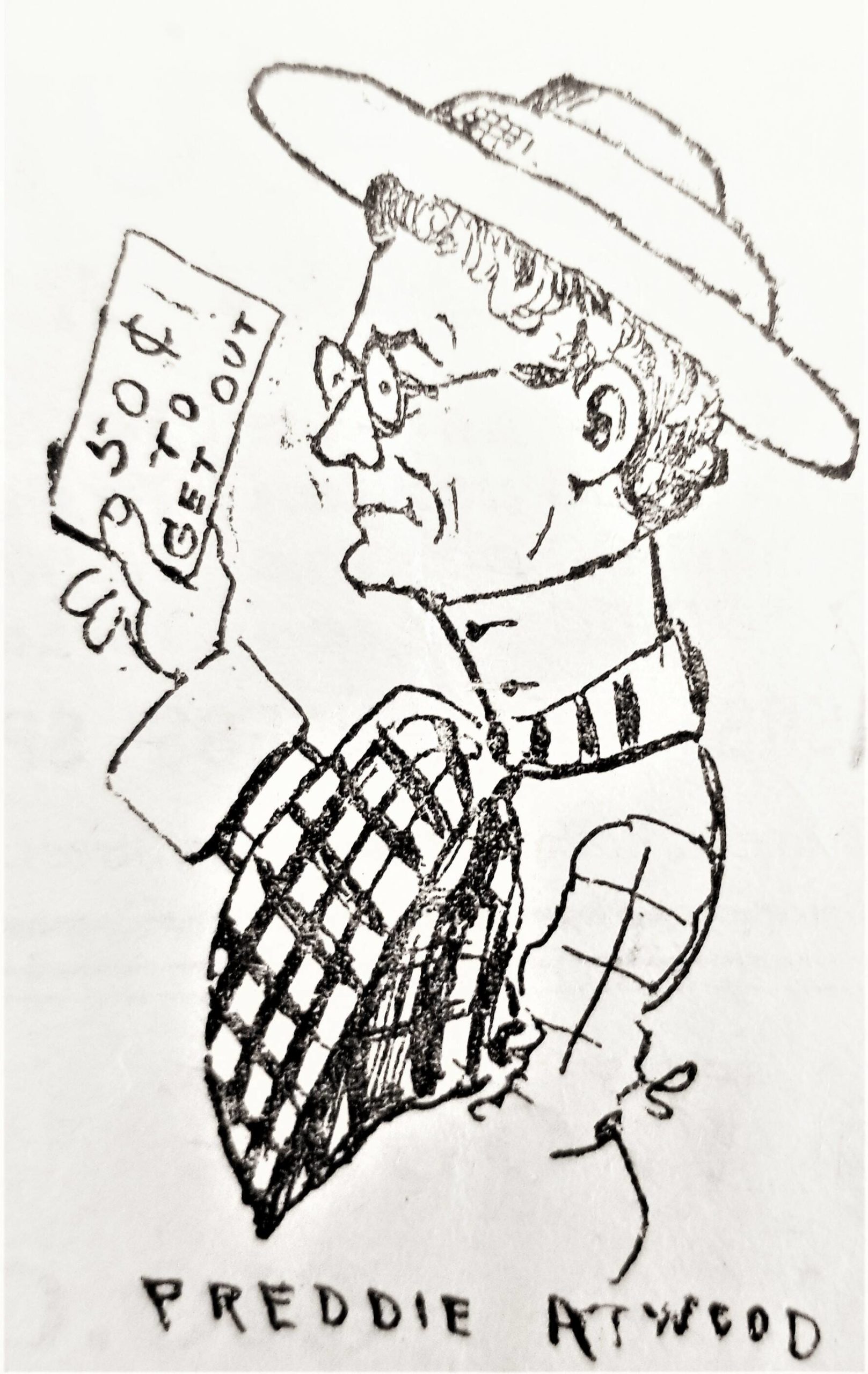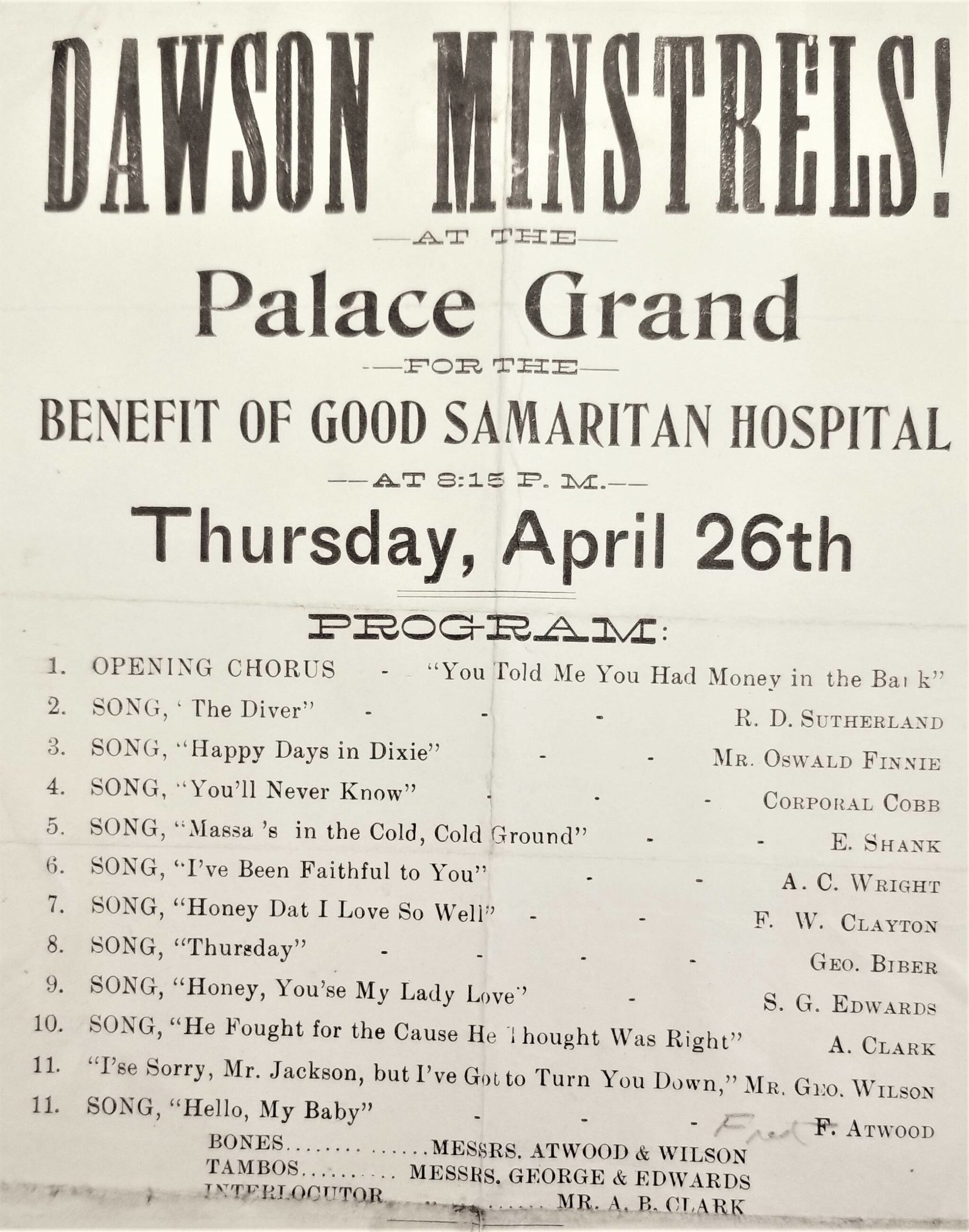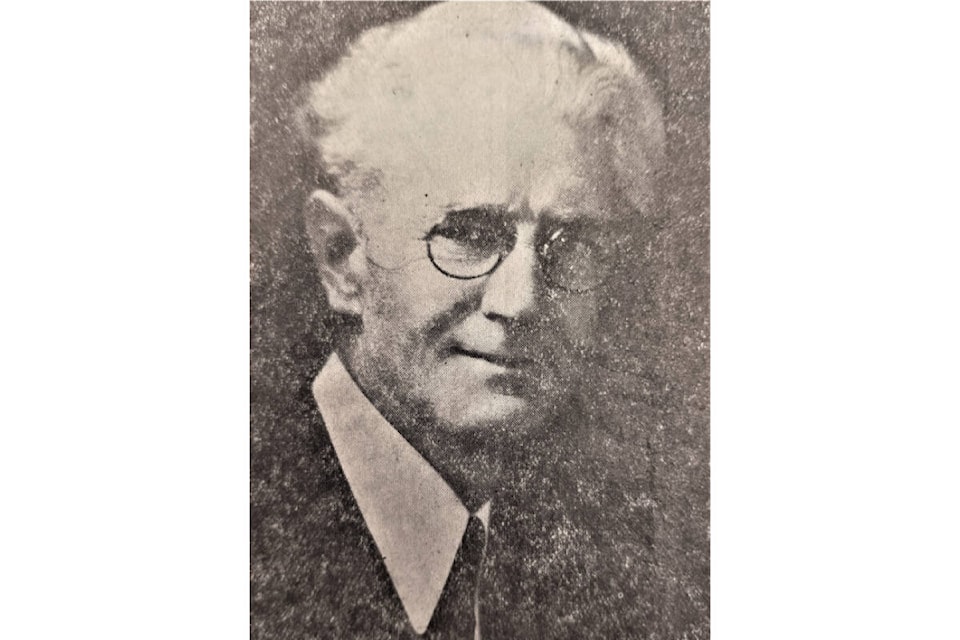Yukon history has been filled with heroes and adventurers like Joe Boyle, Chief Isaac, Sam Steele and Martha Black, but sometimes, it is the people whose reputations have not reached legendary proportions who leave a lasting legacy. Such is the case with Fred Atwood.
Frederick Nelson Atwood Jr. was born in Boston (Suffolk), Massachusetts, on Dec. 4, 1867. Frederick Nelson Atwood senior was a decorative painter of some prominence and Frederick Nelson Atwood junior followed in his footsteps. Atwood Jr. trained at several art schools in the eastern United States, specializing in fresco and decorative arts for the theatre.
In his early twenties, his wanderlust sent him west to Washington state, where his first job was to decorate Ezra Meeker’s home in Puyallup. Meeker, who was once mayor of Puyallup, and later made several largely unsuccessful trips to the Klondike during the gold rush years, had made his fortune growing hops during the 1880s.
In 1892, Atwood was homesteading on the west coast of the Olympic Mountains. Two years later, he was a physical instructor at the YMCA in Seattle. Three years after that, he returned to Chicago and joined his father in the theatre decorating business, but the wanderlust struck him again when the Klondike became big news. In 1897, he struck out for Dawson City, crossing the Chilkoot trail 35 times to bring in his “ton of supplies.”
Like many who came north, he had little success in prospecting and mining, so he turned to mining the miners. Atwood resumed his former work in the decorative arts. Following a trip outside to purchase decorating supplies, he returned to Dawson City in 1901, along with his young wife Mary. He established a business partnership with photographer George Cantwell; he painted signs, designed and painted theatre sets, hung wallpaper, and did other interior decorating work. They were mainly sign painters during the early years, but eventually parted ways, after which Atwood ran a wallpaper business.

Atwood was always active in the Dawson theatre world, and continued to act in and direct plays, and design theatrical sets. In February, 1906, for example, he was both the stage manager and an actor (in the role of the Captain of the Grand Army) for the play “The Maid of Croissey,” in the Auditorium (now Palace Grand) Theatre.
He reprised this role in July in a repeat presentation of the play to raise funds for stranded young stage actress Marjorie Rambeau. Miss Rambeau went on to a remarkable stage and film career, later appearing in roles opposite such renowned actors as John Wayne, Jimmy Cagney, Ronald Reagan and Clark Gable.
Atwood was socially active as well. He was involved in sports, and is frequently noted playing baseball in the summer. He was a member of the Masonic Lodge, and a member of the Arctic Brotherhood, for which he served in various capacities over the years. He even helped organize the Horticultural Fair in Dawson in September of 1903.
After traveling Outside many times over the years to visit his wife and family in Seattle (she moved back there in 1908), he sold his property and business holdings before departing aboard the Dawson, Oct. 21, 1912. Days before his departure, he was initiated into the Yukon Order of Pioneers.
In Seattle, Atwood embarked on a new business venture in the entertainment field, with several former Yukoners: The Hippodrome Amusement Company.
He also became involved in the Sourdough Stampede Association. In 1929, he was the Secretary-Treasurer of the Association when they held a sourdough reunion in the Seattle Civic Roadhouse. Atwood edited the book that was produced in honour of the event.
His activities in later years are a little harder to follow, but in 1954, now 86 years old, he appeared in an article in the Seattle Post-Intelligencer. At the time, the elderly Atwood was residing in the Masonic Home in Zenith, Washington, south of present-day Seattle-Tacoma International airport. He died in 1955 and is buried in Hillcrest Burial Park, Kent, King County, Washington.
Atwood clipped articles from newspapers, and saved tickets to theatre performances, as well as playbills, and programmes for various theatrical productions and community events. Hundreds of such items were returned to the Dawson City Museum several years ago by Atwood’s great granddaughter. Glued into scrapbooks, they are a treasure-trove of theatrical memorabilia.

It is possible to trace Atwood’s participation in a variety of stage productions during his time in Dawson City. A few of the gems in this collection: the program for the first performance in the Orpheum Theatre in February of 1900. The play that night: a three-act comedy titled “Who’s Baby?” A month later, the Orpheum program for March 19 lists Atwood as set designer for a five-act play titled “Cap Impudence.” In April, he appears in a Minstrel show in the Auditorium Theatre, singing “Hello My Baby.”
The programmes are not only a testimony to Atwood’s involvement; they contain countless advertisements for businesses in Dawson. In the September 3, 1900 programme for the Standard Theatre, there are advertisements for Gandolfo’s Candy Store, W.H. Gorham, J.L. Sale and Mendham (all jewelers). There are advertisements for whiskey, drug stores, clothing stores, hotels and photographers. Atwood even advertised his wallpaper and sign painting business.
There are pamphlets listing the activities for the Queen’s birthday celebrations (May 24th) and the 4th of July. Because of the preponderance of Americans living in Dawson in the early days, the 4th of July was the larger celebration.
It is interesting to note that caricatures of some of the actors in certain performances grace the front pages of the local newspapers. Atwood appears in several of these.
In the later years, Dawson could no longer sustain a large theatre community, and programmes for amateur stage productions appear more frequently in the pages of the scrapbooks. Over the decade that followed the gold rush, the various articles in the Atwood collection capture a remarkable snapshot of theatrical life in Dawson City. Sprinkled within the pages are business cards and newspaper clippings that reveal glimpses into the career of Fred Atwood himself.
I found this collection invaluable when conducting the research for my new book, “Hollywood in the Klondike.” But more than that, Atwood rubbed shoulders with the theatre crowd in the early years. He worked at the Orpheum Theatre that was managed by Alex Pantages. He performed opposite future film star, Marjorie Rambeau. It is almost certain that he crossed paths with most of the colourful characters that inhabited the Front Street in Dawson during its heyday, including Captain Jack Crawford, “The Poet Scout.” And though he never became famous himself, what a remarkable time it must have been.
Michael Gates is Yukon’s first Story Laureate. His new book, “Hollywood in the Klondike,” is now available in some stores. You can contact him at msgates@northwestel.net
